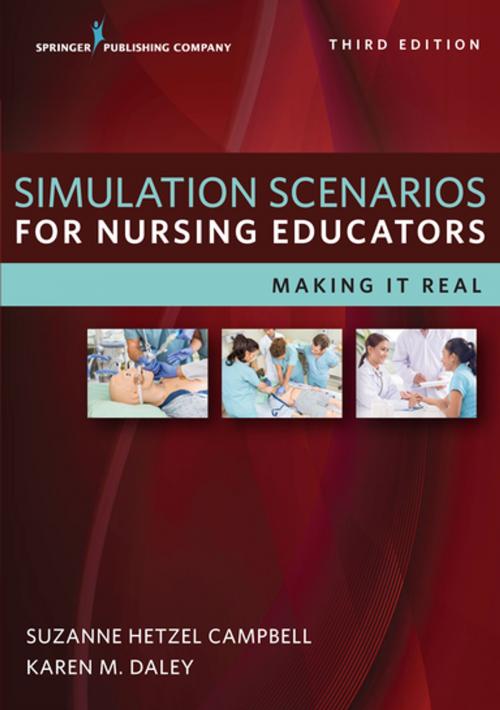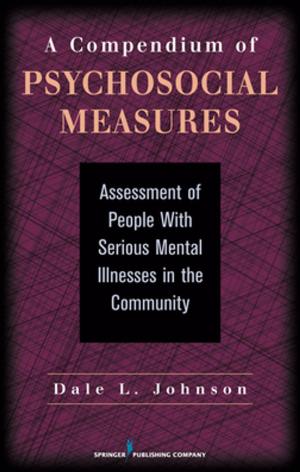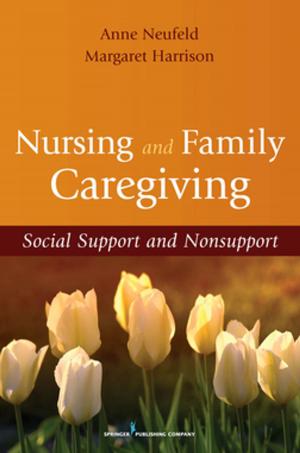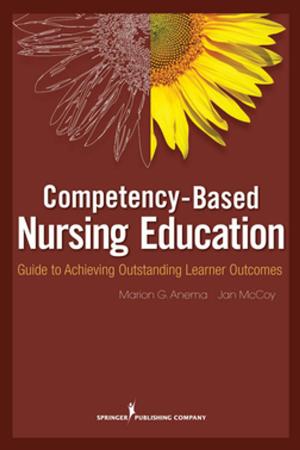Simulation Scenarios for Nursing Educators, Third Edition
Making it Real
Nonfiction, Health & Well Being, Medical, Nursing, Assessment & Diagnosis, Nurse & Patient| Author: | Karen Daley, PhD, RN, Suzanne Campbell, PhD, RN, WHNP-BC, IBCLC | ISBN: | 9780826119391 |
| Publisher: | Springer Publishing Company | Publication: | October 28, 2017 |
| Imprint: | Springer Publishing Company | Language: | English |
| Author: | Karen Daley, PhD, RN, Suzanne Campbell, PhD, RN, WHNP-BC, IBCLC |
| ISBN: | 9780826119391 |
| Publisher: | Springer Publishing Company |
| Publication: | October 28, 2017 |
| Imprint: | Springer Publishing Company |
| Language: | English |
Second Edition was a winner of the AJN Award!
"Unique to this book, and what sets it apart from other books on simulations and clinical scenarios, are the personal experiences…that the authors bring to the chapters. The authors' passion, enthusiasm, and inspiration are truly reflected and demonstrated in each chapter. Authors talk about lessons learned, teaching strategies, and in-depth research… Key highlights in the book include the practice application of how to develop, implement, and evaluate clinical simulations in your nursing program. The authors make understanding simulation pedagogy an easy journey and one that is exciting that educators will want to try and embrace even when there is hesitation and uncertainty." -Pamela R. Jeffries, PhD, RN, FAAN, ANEF; Professor, Dean; George Washington University School of Nursing; From the Foreword
When employed as a substitute for real clinical time, simulation scenarios have proven effective in bridging the gap between theory and practice. Written by educators for educators, this book provides all the knowledge, skills, and tools needed to make simulation feasible, enjoyable, and meaningful for students. In this edition, there are 25 new chapters, 20 of them scenarios for all levels and specialties, and 11 of those representing interprofessional education and team training.
This acclaimed text for nursing faculty provides detailed, step-by-step guidance on all aspects of clinical simulation. Each scenario is broken down into objectives, pre-scenario checklists, implementation plans, evaluation criteria, debriefing guidelines, and recommendations for further use. Replete with diverse scenarios, this comprehensive resource covers geriatric, pediatric, trauma, obstetric, and community-based patient scenarios. Chapters cover all levels of nursing students from pre-licensure to doctoral level, and contain the authors' own advice and experiences working in simulation around the globe.
All scenarios have been updated to adhere to the new best practice simulation standards for design, facilitator and participant criteria, interprofessional criteria, and debriefing processes. A template for creating scenarios spans the text and includes student preparation materials, forms to enhance the realness of the scenario, and checklists for practice assessment and evaluation. The revised edition now includes scenarios easily adaptable to an instructor’s own lab, an international perspective, and a section on graduate nursing education and eleven new interdisciplinary clinical scenarios.
New to the third edition:
- 20 brand-new scenarios in anesthesia, midwifery, pediatric, disaster, and other specialty focused situations, plus five new chapters
- Updated to encompass new simulation pedagogy including best practice standards
- New scenarios easily adapted to an instructor’s own lab
- Integrating disability into nursing education with standardized patients and the use of IV simulations
- Interprofessional and international scenarios focused on areas of global concern: obstetric hemorrhage, neonatal hypoglycemia, deteriorating patients
- A new section on how to "write like a nurse" in clinical simulation environments
- Teaching and evaluating therapeutic communication with a review of instruments for assessment
Key Features:
- Includes information on how to integrate simulation into curricula
- Addresses conceptual and theoretical foundations of simulation in nursing education, including an expanded chapter on the Framework for Simulation Learning in Nursing Education
- Includes a wide variety of practical scenarios in ready-to-use format with instructions
- Provides a template for scenario development
- Delivers recommendations for integration of point-of-care decision-making tools
- Offers opportunities for enhancing complexity, incorporating interprofessional competencies, and debriefing guidelines
- Provides insight into pedagogical intergration of simulation throughout every aspect of the nursing curriculum with scenarios mapped to North American standards and the NCLEX-RN Blueprint
- Includes details on: learning lab and staff development from fundraising and building a lab (Ch. 6), to placement of AV (Ch. 7) to faculty development (Ch. 5) and self-assessment for certification and accreditation (Ch. 54).
- A trauma-informed approach to women’s health (Ch. 33)
- Scenarios with authors from North America (USA & Canada), Brazil, and Hong Kong
Second Edition was a winner of the AJN Award!
"Unique to this book, and what sets it apart from other books on simulations and clinical scenarios, are the personal experiences…that the authors bring to the chapters. The authors' passion, enthusiasm, and inspiration are truly reflected and demonstrated in each chapter. Authors talk about lessons learned, teaching strategies, and in-depth research… Key highlights in the book include the practice application of how to develop, implement, and evaluate clinical simulations in your nursing program. The authors make understanding simulation pedagogy an easy journey and one that is exciting that educators will want to try and embrace even when there is hesitation and uncertainty." -Pamela R. Jeffries, PhD, RN, FAAN, ANEF; Professor, Dean; George Washington University School of Nursing; From the Foreword
When employed as a substitute for real clinical time, simulation scenarios have proven effective in bridging the gap between theory and practice. Written by educators for educators, this book provides all the knowledge, skills, and tools needed to make simulation feasible, enjoyable, and meaningful for students. In this edition, there are 25 new chapters, 20 of them scenarios for all levels and specialties, and 11 of those representing interprofessional education and team training.
This acclaimed text for nursing faculty provides detailed, step-by-step guidance on all aspects of clinical simulation. Each scenario is broken down into objectives, pre-scenario checklists, implementation plans, evaluation criteria, debriefing guidelines, and recommendations for further use. Replete with diverse scenarios, this comprehensive resource covers geriatric, pediatric, trauma, obstetric, and community-based patient scenarios. Chapters cover all levels of nursing students from pre-licensure to doctoral level, and contain the authors' own advice and experiences working in simulation around the globe.
All scenarios have been updated to adhere to the new best practice simulation standards for design, facilitator and participant criteria, interprofessional criteria, and debriefing processes. A template for creating scenarios spans the text and includes student preparation materials, forms to enhance the realness of the scenario, and checklists for practice assessment and evaluation. The revised edition now includes scenarios easily adaptable to an instructor’s own lab, an international perspective, and a section on graduate nursing education and eleven new interdisciplinary clinical scenarios.
New to the third edition:
- 20 brand-new scenarios in anesthesia, midwifery, pediatric, disaster, and other specialty focused situations, plus five new chapters
- Updated to encompass new simulation pedagogy including best practice standards
- New scenarios easily adapted to an instructor’s own lab
- Integrating disability into nursing education with standardized patients and the use of IV simulations
- Interprofessional and international scenarios focused on areas of global concern: obstetric hemorrhage, neonatal hypoglycemia, deteriorating patients
- A new section on how to "write like a nurse" in clinical simulation environments
- Teaching and evaluating therapeutic communication with a review of instruments for assessment
Key Features:
- Includes information on how to integrate simulation into curricula
- Addresses conceptual and theoretical foundations of simulation in nursing education, including an expanded chapter on the Framework for Simulation Learning in Nursing Education
- Includes a wide variety of practical scenarios in ready-to-use format with instructions
- Provides a template for scenario development
- Delivers recommendations for integration of point-of-care decision-making tools
- Offers opportunities for enhancing complexity, incorporating interprofessional competencies, and debriefing guidelines
- Provides insight into pedagogical intergration of simulation throughout every aspect of the nursing curriculum with scenarios mapped to North American standards and the NCLEX-RN Blueprint
- Includes details on: learning lab and staff development from fundraising and building a lab (Ch. 6), to placement of AV (Ch. 7) to faculty development (Ch. 5) and self-assessment for certification and accreditation (Ch. 54).
- A trauma-informed approach to women’s health (Ch. 33)
- Scenarios with authors from North America (USA & Canada), Brazil, and Hong Kong















